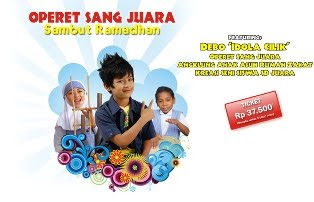My Indonesia
Indonesia, the largest archipelago and the fifth most populous nation in the world, has a total of 17,508 islands, of which about 6,000 are inhabited. Indonesia extends 3,198 miles (5,150km) between the Australian and Asian continental mainland and divides the Pacific and Indian Oceans at the Equator. With a total land area of 767,777 square miles (1,919,443 sq. km), its 190 million inhabitants are made up of 300 ethnic groups who speak an estimated 583 different languages and dialects. There are five main islands in Indonesia. These are: Java, Sumatra, Kalimantan, Sulawesi and Irian Jaya.
Across its many islands, Indonesia consists of distinct ethnic, linguistic, and religious groups. The Javanese are the largest and most politically dominant ethnic group. Indonesia has developed a shared identity defined by a national language, ethnic diversity, religious pluralism within a majority Muslim population, and a history of colonialism and rebellion against it. Indonesia's national motto, "Bhinneka Tunggal Ika" ("Unity in Diversity" literally, "many, yet one"), articulates the diversity that shapes the country. However, sectarian tensions and separatism have led to violent confrontations that have undermined political and economic stability. Despite its large population and densely populated regions, Indonesia has vast areas of wilderness that support the world's second highest level of biodiversity. The country is richly endowed with natural resources, yet poverty is a defining feature of contemporary Indonesia.
Across its many islands, Indonesia consists of distinct ethnic, linguistic, and religious groups. The Javanese are the largest and most politically dominant ethnic group. Indonesia has developed a shared identity defined by a national language, ethnic diversity, religious pluralism within a majority Muslim population, and a history of colonialism and rebellion against it. Indonesia's national motto, "Bhinneka Tunggal Ika" ("Unity in Diversity" literally, "many, yet one"), articulates the diversity that shapes the country. However, sectarian tensions and separatism have led to violent confrontations that have undermined political and economic stability. Despite its large population and densely populated regions, Indonesia has vast areas of wilderness that support the world's second highest level of biodiversity. The country is richly endowed with natural resources, yet poverty is a defining feature of contemporary Indonesia.
Monday, April 6, 2009
Kelereng or Gundu
Kelereng or marbles, in some parts of the world, is a favorite game for boys (when my brother was around 5 to 12 years old he used to play this game (klereng or Gundu) too). There are many variations of games played with marbles.

One of the more popular versions is that a small circle is drawn on the ground. All the players put one of their marbles within the circle. Then each of the players drops another marble to a point outside of the drawn circle. The player that owns the marble furthest away from the circle is entitled to play first.
He must attempt to use the marble that is outside of the circle (striker) to hit the marbles within the circle and knock them outside of the ring. If he is successful in doing, this he is entitled to keep the marbles that he has knocked out of the circle. The striker marble, however, must also come to rest outside of the drawn circle. If it does not, this marble must remain within the circle and the owner then forfeits this marble.
If the player is successful in knocking one of his opponents' marbles out of the ring, he can continue his turn and try to strike any other opponents. striker marbles. If he is successful in hitting his opponents. striker marble, he is entitled to take that marble and his opponent can no longer play the current round. If however he misses his opponents. striker marble, he looses his turn and the next player can then start to play.
I don't like to play Klereng or Gundu. But I like to collect them. What about you?
sources : expat.or.id, google.co.id/pictures
Labels: Indonesian Traditional Games
0 Comments:
Subscribe to:
Post Comments (Atom)



,+Jakarta.jpg)




Post a Comment